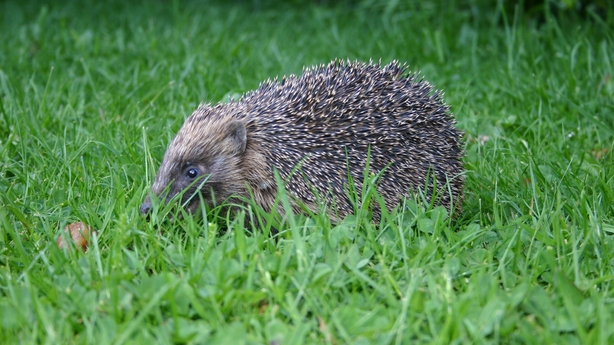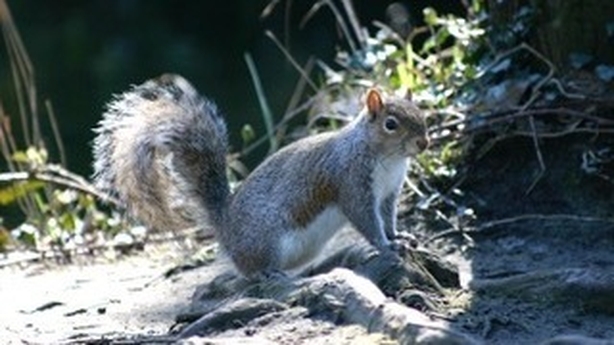The Big Sleep and other Strategies
Eanna Ni Lamhna outlines several options for getting through winter.

Winter is officially here. The clocks have gone back, the long dark evenings have arrived, we will soon be making our first morning trip to the car windscreen with the kettle of water. Our animals are facing into a long winter where food will be scarce or indeed, non- existent for some of them. How will they manage? There are several coping strategies, all of which have their own particular merits.
Fly away from it all is the one the insect-eating birds such as the swallows have done. They have chased summer across the globe and are now basking in the early summer sunshine in South Africa. It will be April before we see them in any numbers again.
Another coping method, if your food is unavailable, is to eat something else. This is what omnivores such as robins, foxes and badgers do. Their digestive systems can cope with fruit, nuts and berries when no spiders, flies, earthworms or roosting birds are easily available. Animals that have such adaptable digestive systems are among the most successful – think crows, magpies, rats, mice – humans even!
But perhaps the most attractive option of all is to take to the bed and stay there until Spring comes and food is around once more. This is what hedgehogs and bats do. Because no slugs and snails or moths and mosquitoes are around in the winter. these two mammal groups have successfully adopted hibernation as a survival strategy. They lower their body temperature by about 30 degrees centigrade down to 10 degrees. They slow their heartbeat and their breathing rate. It takes very little to sustain them in this state of suspended animation and so their body fat is sufficient resource to keep them alive until April. Moles and Dormice do this too, but of course
we have no moles here and very few dormice. Hibernation is only necessary at our latitudes – there is no need further south where food is more available in the warmer winters, and it is much too risky at tundra latitudes where you might very well freeze to death.

Squirrels on the other hand don't hibernate. It stands to reason that they'd have to be awful eejits altogether to be out collecting and storing nuts all during September and October, if they were going to be in a hibernating coma from November till April! What they have been doing is stocking the larder while the trees are having a closing down sale in nuts. They now have plentiful supplies stashed away to obviate the necessity to go out foraging in inhospitable weather.
But hibernating they are not – they are merely languishing indoors in their dreys, no doubt reading books, newspapers and weekly magazines, even scrolling on their phones, and dining sumptuously on quality nuts. Come a fine sunny winter’s day and you will see them hopping around the ground in a woodland near you.
But what of the creatures that have no clever tricks up their sleeves? The ones which go on as before and try to make the best of a rapidly deteriorating situation? Our smallest mammal – the pygmy shrew – is one such mammal. How does it manage during cold short winter days?
This mammal is really very small – it is about half the size of a house mouse. The mouse has a body size of 9cm – a monster in comparison with the pygmy shrew whose body length is a mere 5cm. Unlike the house mouse which can eats all sorts of domestic comestibles from candle wax to cornflakes, the pygmy shrew is a carnivore and only eats meat. Such items as beetles, woodlice, flies, spiders and small insect larvae feature in the main on their menus. Because these animals are so tiny they have a very high metabolic rate and so must eat enormous quantities of food to keep going.
In fact pygmy shrews eat their own weight in food every day! Mind you for a pygmy shrew this is not so much really, as it weighs a mere 4-5grms. But because its body is so small it is constantly losing heat and so must eat all the time. If it doesn’t have any food for three hours it will die of hunger. So it must search for food constantly – day and night – only allowing itself short naps, as if it fell into a deep sleep lasting more than three hours it would waken up dead! You can see how hibernation is certainly not an option for this poor creature.
This fast and furious life doesn’t last very long. Young born at the end of August will be weaned at about 21days and weigh 2.5 grams at this stage. By foraging furiously and gobbling every woodlice and spider in sight, they may reach a respectable four grams by the start of winter. It’s hard though finding food in cold weather and only about a quarter of them will make it through to Spring. Those that don’t die of hunger can be killed and eaten by owls or just killed and sniffed at by cats and foxes who don’t like the taste of them. Apparently they have pretty pungent scent glands although the cat and fox don’t seem to notice these until the poor beast is dead.
If they make it through the winter they will begin to breed the following spring and can give birth to several litters of up to five babies in each. They can live up to thirteen months at best so they only ever have one winter to contend with. No storing of survival tricks therefore from one winter till the next. They are really very common all over Ireland. You could quite easily encounter one as you sweep up the leaves in your garden. You will know it is not a mouse by its small size and its elongated nose. So no need therefore for hysterical screams and standing up on chairs.
